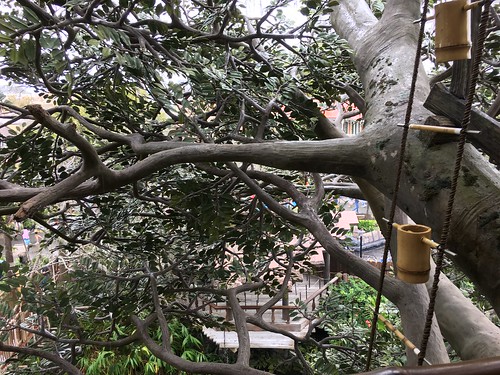Affirmation of the interaction in between DC-UbP  and USP5 or UbE1. A, DC-UbP is made up of two different domains, the N-terminal UBD and the C-terminal UbL. The N-terminal assemble (UbP_N) consists of residues 1441, whilst the C-terminal (UbP_C) consists of residues 12934. B, Co-IP experiment testing the interactions in between DC-UbP and USP5 or UbE1. FLAG-tagged DC-UbP, UbP_N or UbP_C was co-transfected with MycUSP5 into HEK 293T cells. The mouse anti-FLAG M2-agarose was used for the IP experiment. Endogenous UbE1 was detected with an antibody against UbE1. Ctrl, protein-A/G beads with out anti-FLAG antibody. C, NMR titration of DC-UbP with USP5. The relative peak intensities for the two Nand C-terminal domains of DC-UbP were displayed upon addition of molar ratios of USP5 into the 15N-labeled DC-UbP protein. For DC-UbP on your own, the peak intensities (heights) had been normalized as 1 for all the peaks of DC-UbP other than those for prolines and unassigned residues. The strains point out the imply peak intensities for each area of DC-UbP at a molar ratio of 1:1, which are .fifty six for the UBD area and .27 for the UbL domain, respectively. D, As in (C), NMR titration of DC-UbP with UbE1. The imply peak intensities are .54 and .39 for UBD and UbL, respectively, at a molar ratio of 1:one.
and USP5 or UbE1. A, DC-UbP is made up of two different domains, the N-terminal UBD and the C-terminal UbL. The N-terminal assemble (UbP_N) consists of residues 1441, whilst the C-terminal (UbP_C) consists of residues 12934. B, Co-IP experiment testing the interactions in between DC-UbP and USP5 or UbE1. FLAG-tagged DC-UbP, UbP_N or UbP_C was co-transfected with MycUSP5 into HEK 293T cells. The mouse anti-FLAG M2-agarose was used for the IP experiment. Endogenous UbE1 was detected with an antibody against UbE1. Ctrl, protein-A/G beads with out anti-FLAG antibody. C, NMR titration of DC-UbP with USP5. The relative peak intensities for the two Nand C-terminal domains of DC-UbP were displayed upon addition of molar ratios of USP5 into the 15N-labeled DC-UbP protein. For DC-UbP on your own, the peak intensities (heights) had been normalized as 1 for all the peaks of DC-UbP other than those for prolines and unassigned residues. The strains point out the imply peak intensities for each area of DC-UbP at a molar ratio of 1:1, which are .fifty six for the UBD area and .27 for the UbL domain, respectively. D, As in (C), NMR titration of DC-UbP with UbE1. The imply peak intensities are .54 and .39 for UBD and UbL, respectively, at a molar ratio of 1:one.
Characterization of the DC-UbP-binding area in USP5. A, Domain architecture of USP5. NT, N-terminal area ZnF, zinc-finger area UBA1 and UBA2, tandem UBA domains (UBA12) C-box and H-box, two bins of the USP domain. The constructs of USP5_ZnF, USP5_UBA12 and USP5_UBA1 consist of residues 16989, 62549 and 63192, respectively. B, Overlay of the HSQC spectra of 15N-labeled UbP_C (two hundred mM) and addition of UBA12 at various molar ratios. C, As in (B), overlay of the HSQC spectra of 15N-labeled UbP_C (200 mM) and addition of ZnF at different molar ratios. D, Titration of UbP_C with UBA12 for measuring the binding affinity. The focus of 15N-labeled UbP_C was one hundred fifty mM. E, Diagram of the chemical-change adjustments of UbP_C on titration with UBA12 vs . residue variety. The molar ratio of UBA12 over UbP_C was 1:1. The residues with chemical change alterations above the Suggest+SD value (dashed line) are deemed involved in considerable speak to with UBA12. F, Mapping of the UBA12-binding GS-7340 (hemifumarate) manufacturer surface (blue) on the UbL domain. This binding-site floor is equivalent to that of the UBA binding on Ub molecule.22706076 The structural design was produced based mostly on chemicalshift perturbation information and HADDOCK evaluation and shown with PyMOL.
Mammalian UbE1 is also a massive multi-area enzyme with unknown framework, but the 3D constructions of its orthologs have been solved [27,28]. The area architecture of human UbE1 displays that it is largely comprised of the adenylation area (Ad), the catalytic cysteine domains (FCCH, SCCH) and the C-terminal UFD area (Fig. 5A) [29]. We purified a few fragments of UbE1 and done NMR titration experiments on DC-UbP and its different domains. The personal UFD protein was not steady when purified in vitro, so we expressed and purified this area as a GST-fused form for the experiments. The final results confirmed that only the C-terminal UFD component bound with DC-UbP, whilst both the FH (FCCH+Advertisement) and SCCH fragments did not (Fig. S4AS4C).